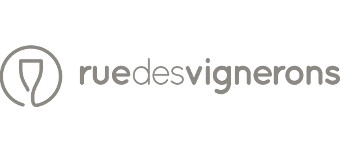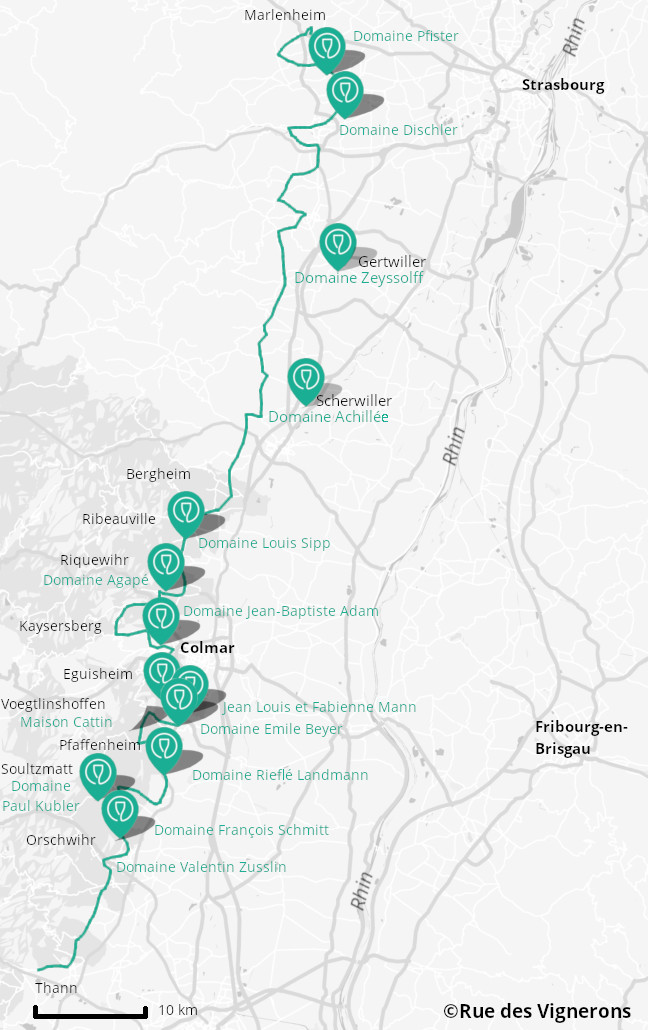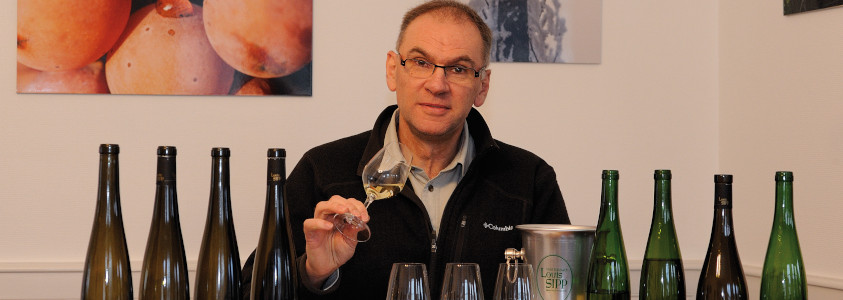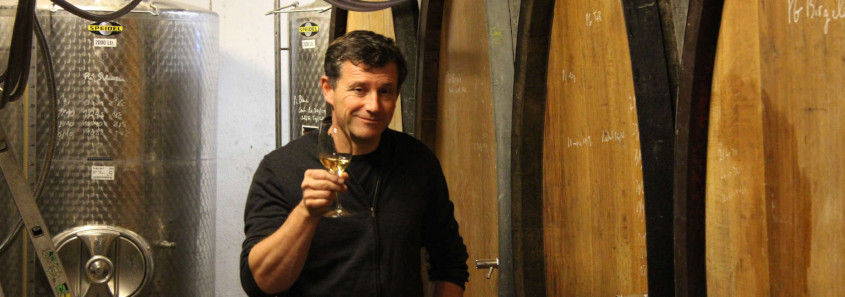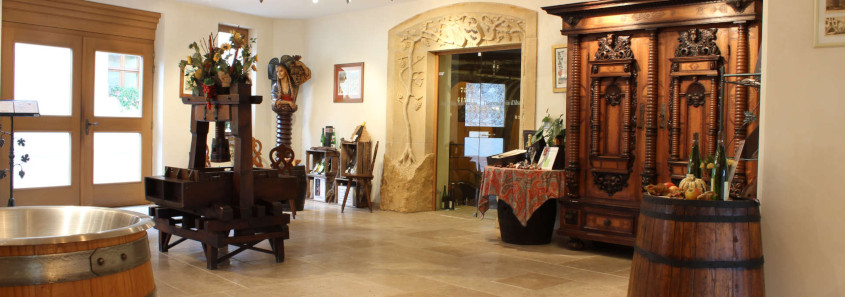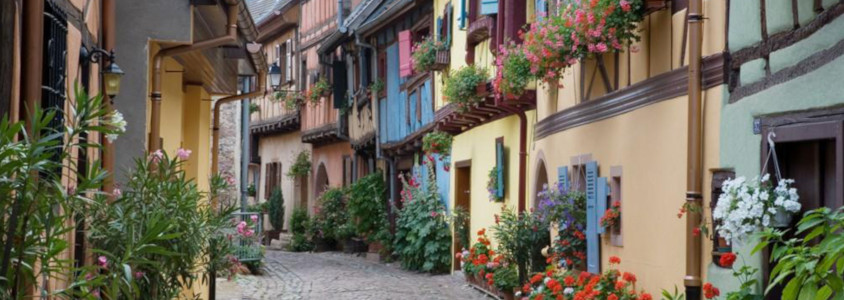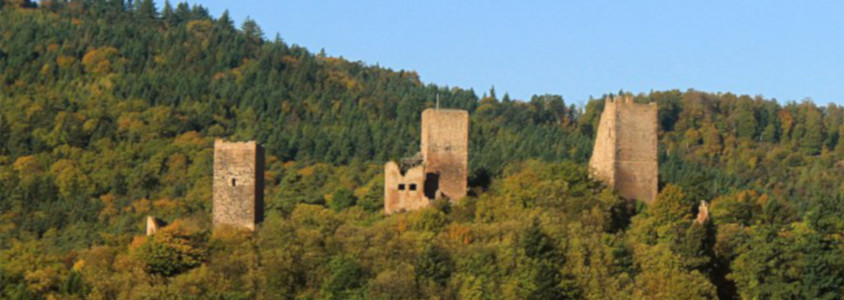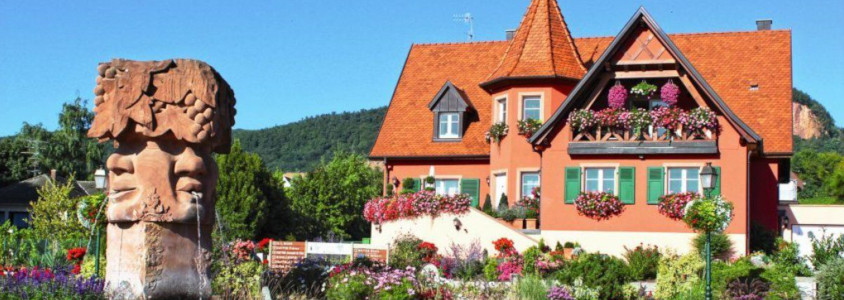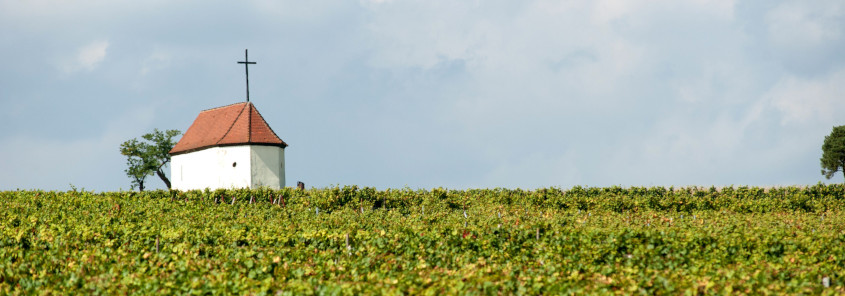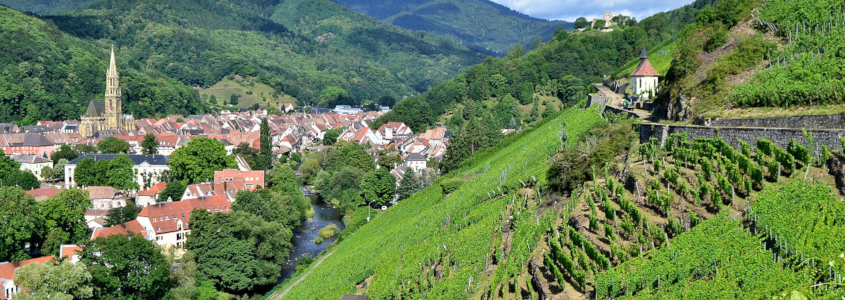Alsace wine route
Alsace city © vinepair
The Alsace region is famous for its wine and its beautiful villages. The Alsace Wine Route is actually the oldest wine route in France. It was inaugurated on May 30th, 1953 during a car rally where two convoys took the road, one leaving from the very north of the Alsatian vineyard, from Marlenheim, and the other leaving from the very south of this vineyard, from Thann.
Between the Rhine and the mountains, the Alsatian Wine Route is a slender strip stretching over 170 kilometers through 120 towns and typical Alsatian villages. It is a really nice way to enjoy cycling in Alsace as roads are adapted to bike tours. The city of Colmar is at the heart of this route and is surrounded by beautiful small picturesque villages. Home of Alsace’s tourism, this wine route will help you discover Alsatian wine and Alsatian food. You will indeed be able to discover many wineries, to meet winemakers and visit the most beautiful villages of Alsace with flowery streets and half-timbered houses. In summer, many activities are offered in the cities and villages of this route. In winter, the Christmas markets are worth seeing. Whatever the distance you choose to travel, you can reach it by many means of transport: on foot, by bike, by car, motorcycle or by camper-van.
From Strasbourg to the south of Colmar, discover our suggestions and our selection of wineries and cellars to visit during your course along the wine route. If you are wondering what to see in a day or during a week-end, you will also find all the must-sees of this famous route.
Go directly to the section of your choice: Strasbourg, Marlenheim, Gertwiller, Scherwiller, Ribeauvillé, Riquewihr, Kaysersberg, Colmar, Eguisheim, Voegtlinshoffen, Pfaffenheim, Soultzmatt, Orschwihr, Thann
Start your wine route at Strasbourg, European capital and capital of Alsace. This city houses the seat of the European Parliament and the Council of Europe. It has a rich historical and cultural heritage and you can visit many monuments such as its famous cathedral, the Kammerzell house, the old customs, the boatmen’s wharf, the Covered Bridges, the Rohan Palace… The petite France district will also seduce you with its romantic atmosphere and the authenticity of its half-timbered houses of the 16th and 17th centuries, former homes of fishermen, tanners and millers of the city.
To know everything about Strasbourg and the best things to do and visit, click here.
Strasbourg ©Michelin voyages
Marlenheim
At 20 minutes from Strasbourg, go to the city of Marlenheim, nicknamed the “door of the Alsace wine route” as this village is the first step of the Alsace wine route. A few minutes south of Marlenheim, you can start your first visit of the wine route by visiting the domaine Pfister winery. Mélanie Pfister, first winemaker woman of this family-owned winery will welcome you in her half-timbered house to help you discover her work and her wines.
Domaine Pfister
Gertwiller
If you like charming little villages, then you’ll love Gertwiller. Come and discover its colourful little houses, hiding between plains and wine-growing hills. Gertwiller is the Alsatian capital of gingerbread. A gourmet break is a must in Gertwiller during your (re)discovery of the Alsatian wine route. Two local companies still produce gingerbread today: La Maison du Pain d’épices at Lips and Le Palais de Pain d’épices et Fortwenger, which will delight your taste buds!
The Maison Zeyssolff, established in Gertwiller since 1778, has been passing on the passion for wine and the expertise of the vine from father to son for 11 generations. The House is present on all the Alsatian grape varieties, the geological variety of its plots of land gives its wines an undeniable character. In organic conversion since 2018, the House is acutely aware of the current ecological issues that it wishes to integrate into its ageing process.
Since 2005, the Maison’s shop “Au Péché Vigneron”, located under the family home, welcomes you for various wine tourism activities throughout the year. It is also possible to book one or more nights in the five gîtes offered by the estate in the heart of the vineyard. Maison Zeyssolff is not just a simple wine estate. It is a true place of sharing, which tells several stories thanks to a clever blend of authenticity and modernity. The Zeyssolff story is above all that, it’s a family, a region and a passion: wine.
Domaine Zeyssolff
The village of Scherwiller is at a few kilometres from the famous Wine Route in the heart of Piedmont. The main attraction is the Riesling, which is the largest endemic grape variety in the area. The 370 hectares of vineyard that the commune counts make it the third largest in terms of wine-growing area in the Bas-Rhin department.
Apart from its vineyards, Scherwiller is also worth a visit for its authenticity. A true immersion a few centuries back in time, take a stroll through the village and discover its hundreds of wash houses. Indeed, crossed by the river Aubach, the village is dotted with small stone bridges, old vestiges, and of course, emblematic half-timbered houses…
Scherwiller Village ©Cannal Blog
Safeguarding terroirs and ecosystems has been an issue of concern to the Domaine Achillée for two decades now. Indeed, it is already some twenty years since the estate completed its transition to organic agriculture. Since 2003, the estate has been taking up the challenge of biodynamic farming. The last step in their pursuit of ecology will take place in 2016, with the construction of a bioclimatic winery. Since then, Achillée has been vinifying its own wines in total independence and respect for nature.
The entire Achillée team will be happy to meet you at the cellar, where they bring their passion to life on a daily basis.
Domaine Achillée
This beautiful village has kept some parts of its medieval fortifications. The “Butchers’ Tower” dates from the 13th century. Classified as historical monument in 1866, it was saved from destruction following a fire in the 19th century. It delimits today the old town from the rest of the town. The village is adorned with squares and fountains. You can stroll along its famous “Grand’rue” and its picturesque neighborhoods and sit among its beautiful terraces.
Village of Ribeauvillé ©tourisme-alsace.com
Take also the opportunity to stop at the domaine Louis Sipp winery, located in the main street of the village. This family-owned winery, where you will be welcomed by the owner and his wife, practices organic viticulture since 2008. You can enjoy there a wide range of wines and visit the cellars of the house in a warm and friendly atmosphere.
Riquewihr
Essential stage of the wine route, Riquewihr is one of the most beautiful villages in Alsace, surrounded by ramparts. The village has kept all its architecture since the 13th century miraculously passing through all the wars. You can admire all the possible variations of half-timbered houses, oriels, fountains and old wells. Nicknamed “Pearl of the Alsatian vineyard”, the village is surrounded by vineyards and the quality of this vineyard is recognized worldwide.
The Dolder, emblem and gate of the city, used to be a defensive tower, a watch tower and a belfry. Since 1911, it houses a museum where you can discover the history of the city since the 13th century, its means of defense and the various functions of guards, porters, lookouts, night watchmen…
Village of Riquewihr © www.ribeauville-riquewihr.com
Kaysersberg
Old medieval city with its cobbled streets and half-timbered houses, Kaysersberg was elected “most beautiful village of France” by French people in 2017. The first vines in Alsace were also imported from Hungary to this village in the 16th century. Wine, as for all the villages located along the wine route, is really important for the local economy.
Village of Kaysersberg © atout-france.fr
Located on the Schlossberg mountain, the castle of Kaysersberg, now completely in ruins, was built in the 1200s. It testifies of the strategic importance of the city that connected Alsace to Lorraine in the Roman era. You can access it by climbing along a path among the vineyards. Then you can choose to climb to the top of the keep of this ancient fortress of the Middle Ages which offers a panoramic view on the village of Kaysersberg. This cylindrical tower is the only vestige of this castle (the oldest of Alsace) to remain intact.
Kaysersberg’s Castle ©tourisme-alsace.com
2 minutes from Kaysersberg, in the village of Ammerschwihr, the domaine Jean-Baptiste Adam winery allows you to discover for free their 19th century cellar. This family-owned winery started to cultivate its vines in biodynamics (a method that strengthens the resistance of vine plants and favors biodiversity by boosting and intensifying organic life in the vineyards).
Tasting room, Domaine Jean-Baptiste Adam
Colmar
Colmar is the capital of the wine route of Alsace. Essential step, you can discover and admire the beauty of this city nicknamed the “Little Venice” because of the alignment of houses on both sides of the river. Nestled in the heart of the Alsatian vineyards and at the gates of Germany and Switzerland, Colmar offers tasty gastronomy, a typical Alsatian atmosphere, renowned wines and of course a unique architecture dating mainly from the Middle Ages to the 18th century.
Discover the district of “Little Venice”, the district of Tanners with large houses and white facades, half-timbered houses and mansions, the Head House dating from the 17th century decorated with 111 masks and a splendid oriel of three floors…
To know everything about Colmar and the best things to do and visit, click here.
Colmar ©Pierre et vacances
Eguisheim
Another essential step of the wine route: Eguisheim, ranked among the most beautiful villages in France since 2003. This medieval city is deployed in concentric circles and you can admire its beautiful colorful half-timbered houses, fountains and gardens.
Village of Eguisheim, ©tourisme-alsace.com
The village is overlooked by the Three Castles on the Schlossberg hill dating back to the 12th and 13th centuries. Located 591 meters above sea level, from there, you will have a magnificent panorama on the plain of Alsace. The oldest castle was the residence of Pope Leon IX, who spent his childhood there. Today, only three dungeons remain. They are part of a former castle and culminate on the Alsatian vineyard and on the village of Eguisheim.
The three Castles ©tourisme-alsace.com
If you plan to be in Eguisheim for lunch, the domaine Emile Beyer winery offers a nice experience : a meal in an Alsatian inn located in the village followed by a visit of their cellar and a wine tasting in their house, a former hotel of the 17th century located in the heart of the village. In summer, the winery also offers electric bike rides to discover the vineyards of the region.
Lunch at the Pavillon Gourmand, Gourmet discovery at Eguisheim, Domaine Emile Beyer
Still in the center of Eguisheim, you can visit the domaine Jean Louis and Fabienne Mann winery. This family-owned winery has been in organic farming for more than 10 years and favors natural viticulture and manual harvesting. These passionate winemakers and their son will explain you how each grape variety can influence a wine and make you taste several wines including their two Grands Crus: Pfersigberg and Eichberg.
Domaine Jean Louis et Fabienne Mann
Voegtlinshoffen
Another stage of the wine route located at 10 minutes’ drive from Eguisheim: Voegtlinshoffen, a charming small traditional flowery town with clean streets and welcoming cellars. It attracts a lot of tourists in search of calm and tranquility. The “Rabseppela”, a sculpted statuette showing a little man admiring a bunch of grapes, testifies of the city’s wine attachment. At the entrance of the village, the fountain of Bacchus, carved in pink sandstone and topped with leaves of vines symbolizes the work of the vine and stone.
Bacchus fountain, Voegtlinshoffen ©jds.fr
Tasting room, Maison Cattin
Pfaffenheim
10 minutes from Voegtlinshoffen, the village of Pfaffenheim is full of typical winegrowers’ houses with porches and cellars on the ground floor and upstairs housing. The origins of the village date back to Roman times and perhaps Celts. Indeed, the name of Pfaffenheim could also be translated as “home of the druids” and many monuments attest to this origin such as the Schauenberg dolmen, which is also called “the Druids’ table”, and the Teufelstein rock. According to the legend, the footprints on this rock come from the scratches of the devil who, opposed to the enlargement of the Schauenberg chapel in 1515, threw himself on this rock because it was used to feed the construction site. But it suddenly softened, and the claws of the devil sink, explaining the presence of footprints and its second name of “the devil’s stone”.
Village of Pfaffenheim, ©youtube
To discover the Alsatian vineyard from a completely different angle, go to the domaine Rieflé Landmann winery. The owners will help you visiting their vineyard by making the parallel between the cycle of winemaking and human life, and addressing various themes such as the influence of mythologies and religions on the heritage of the vineyards of Alsace. Several options of visit are offered including 5 different bike tours followed by a lunch break and a tasting of their wines.
“Vélo-vigne” activity, domaine Rieflé Landmann
Soultzmatt
You can visit the castle of Wagenburg, the only remain of the seven castles built during the Middle Ages. This castle, built at the beginning of the 16th century by the Stoer from Stoerenbourg family, was used to defend the valley. Modified several times since its construction until today, it is classified as a historical monument since 1988. You can admire its large corner tower with gunboats and its narrow-molded windows.
Wagenbourg Castle ©Tourisme-alsace.com
If you stop at Soultzmatt, we recommend you to visit the domaine Paul Kubler winery, a family-owned winery founded in 1620. These passionate winemakers do not count their time and like to welcome people and share their passion. You can taste there a wide range of wines from the noble valley, share with the owners the history of the winery and the characteristics of their different wines.
Domaine Paul Kubler
Orschwihr
Then head towards Orschwihr, a small village of winegrowers, located at the foot of the Vosges mountains, in between vineyards and hills. The geographical location of this village explains that a part of its vineyard is ranked among the Grands Crus d’Alsace (Pfingstberg). Enjoy your stop in the village to climb to the Bollenberg Chapel also called Holy Cross Chapel. It is located on a hill of 363 meters high above sea level, surrounded by vineyards, and it is made of Jura limestone. You will have a magnificent panorama there. Accessible on foot or by car, this hill is very popular in summer by hikers. The chapel is also called by the inhabitants of the village “chapel witches”. Indeed, it was once a place of pilgrimage that left behind many legends. Nowadays every summer during the night of 14th to 15th of August, pilgrims from all over the region gather and celebrate the “witches’ fire” by telling the many legends related to the chapel.
Bollenberg Chapel ©domaine Valentin Zusslin
In Orschwihr, we advise you to visit two wineries : one is led in organic viticulture and the other in biodynamic viticulture.
François Schmitt and his son Frédéric, passionate winemakers who have in their DNA to welcome people, practice viticulture in harmony with their terroir in order to harvest grapes at their optimum maturity. Since 2010, the entire winery is managed following biological precepts. They will share with you their still and sparkling wines, their late harvest and a selection of noble grains.
Domaine François Schmitt
Finally, go to Thann, last village and last stage of the wine route, located in the south, at 25 minutes by car from Orschwihr. You will not be disappointed by the authenticity of its streets, fountains, houses and fortifications. Thann is, moreover, the only village of Alsace whose entire vineyard is classified Grand Cru. You will be able to admire the vineyard and the city by going to the mountain of Rangen, the only terroir with volcanic rock. Then go to the castle of Engelbourg, and its famous “eye of the witch”, nicknamed this way as it is reminiscent of an open eye on the valley, which monitors the houses and roofs of the city.
View of the city from the Rangen mountain ©wikipedia
We wish you a pleasant discovery of the Alsatian wine route!
